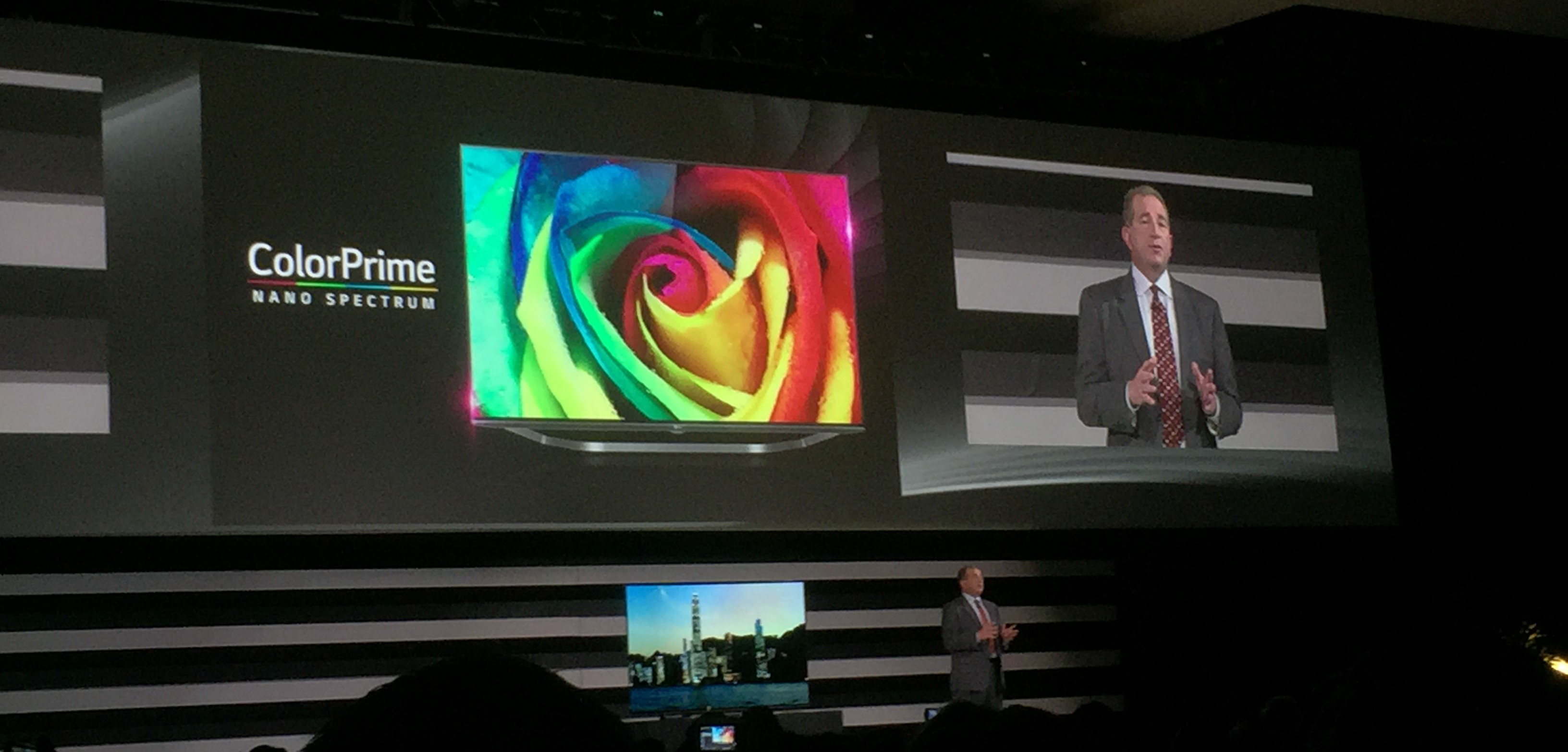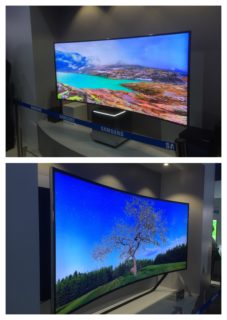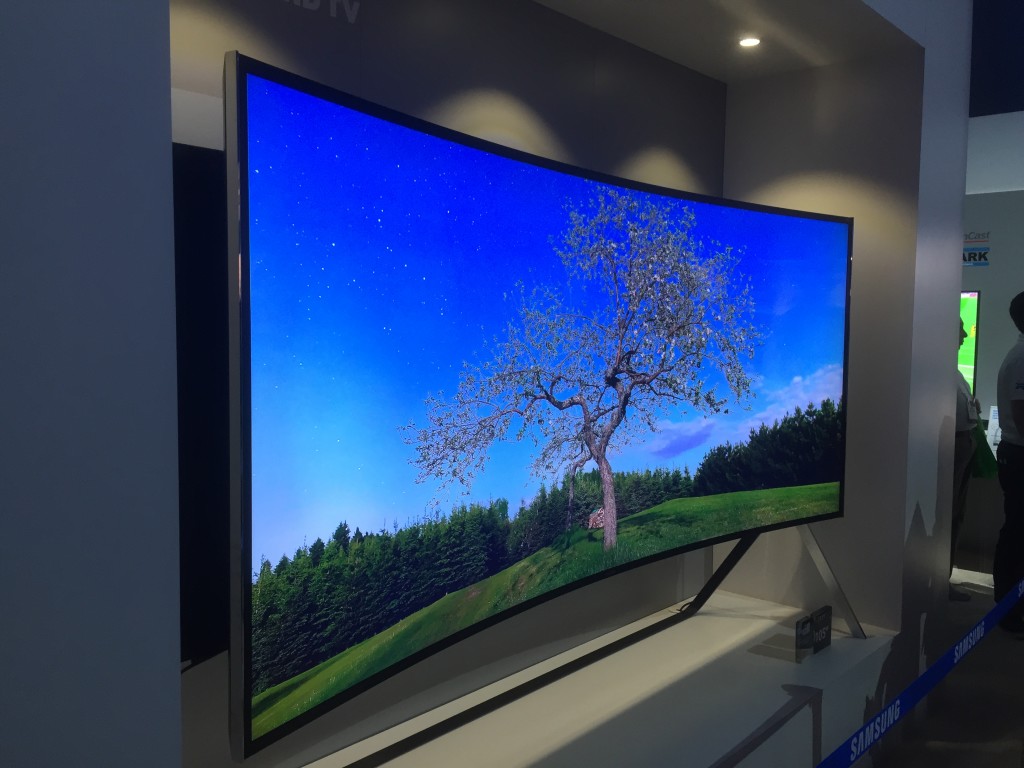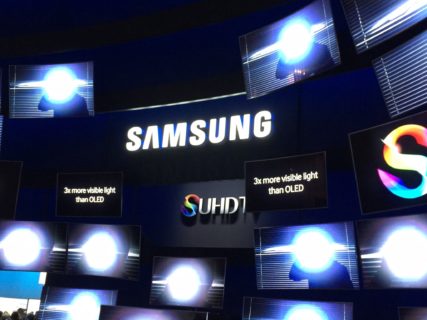The Future of Display Technology from CES 2015
January 09, 2015
With CES 2015 coming to a close in Las Vegas it’s clear that we’re in for a strong year in the home theatre space. Topping the list of big hits is 4K, followed by OLED display technology, transformable curved screens, and one technology that’s going to change how you watch TV that you haven’t heard of yet. Read on!
2015 is the year of 4K. If you haven’t been tuned in, 4K UHD is the next generation TV technology driving crisp, clear picture at a resolution that’s up to four times more detailed than HD. That might not sound like much, but seeing 4K in real life is nothing short of jaw-dropping. Prices are coming down across the board for commodity TVs, making way for premium models with better features and higher quality at lower costs. Stepping up in to a higher quality 4K display is more attainable now, and manufacturers have turned their attention to refining the upper tier of 4K televisions with better streaming features, more elegant design, and faster internal processors. The overall result is that if you’re looking for a 4K display, you’ll spend less on it this year than you did last year, and you’ll probably get more features for your dollar than you did before.

OLED or Organic Light Emitting Diode is coming; it’s another display technology that drives your TV, like LED, LCD, or Plasma. It uses a different way of generating light and colour that is more precise than LED, more like the now-discontinued plasma technology. Like plasma, OLED-powered TVs have incredibly wide contrast, with bright whites and deep black levels. The black on OLED displays is so black that many calibration tools can not register any light emitting from them; the dark areas of the picture are, in effect, as black as the TV screen is when it is off. LG was the winner of OLED picture quality at CES 2015, showing off a flexible panel that had unbelievable colour and contrast, available here in Canada in 2015.
 Curved screens continue to be best sellers for each manufacturer; the consensus from consumers is that curved screens really draw you into the action, and that they look bigger than they are, offering you more value for your dollar. The big change this year? Screens that can curve when you want them to, but that return to a flat state, giving you a thin-to-the-wall flat panel just by touching a button. These displays look incredibly cool in both states, with premium picture quality and the amazing ability to seamlessly transform from one shape to another.
Curved screens continue to be best sellers for each manufacturer; the consensus from consumers is that curved screens really draw you into the action, and that they look bigger than they are, offering you more value for your dollar. The big change this year? Screens that can curve when you want them to, but that return to a flat state, giving you a thin-to-the-wall flat panel just by touching a button. These displays look incredibly cool in both states, with premium picture quality and the amazing ability to seamlessly transform from one shape to another.
The last piece of technology that really wowed us at CES 2015 was HDR for televisions and displays. HDR or High Dynamic Range does an amazing job of putting more colour on your screen, offering more detail in bright and dark areas than has ever been possible before. The company ushering HDR in to the masses? Netflix! Netflix is leading the way by offering in-house content (like Marco Polo) in HDR, helping to solve the chicken and egg problem that 4K is experiencing. What do we mean? If you’ve owned a 4K display you may have had trouble in the past getting content because content creators were waiting for an audience for 4K, while the audiences were waiting for content to become available before buying 4K. By establishing a market for HDR before sets become available to the mainstream later this year, Netflix is helping to push the boundaries of TV outwards, making it better for audiences everywhere. You will need an HDR compatible TV and an HDR compatible streaming source (current model Apple TV units are not capable of pushing out HDR), but companies like Roku have already announced that at least some of their future models will have support for this new feature.
Want an in-home consultation on amazing new premium TV Technology? Call us at Pure Image today!
- Do I need a Control System? - March 20, 2024
- Your Smart Home is Only as Good as Your Integrator: The Importance of Superior Aftercare - May 10, 2023
- Is it Time for a System Takeover? - February 25, 2023

